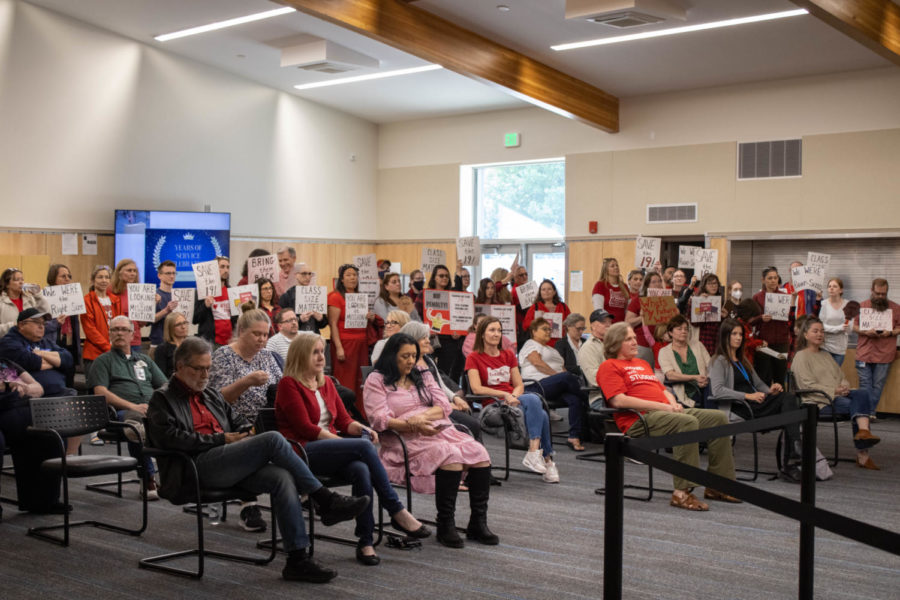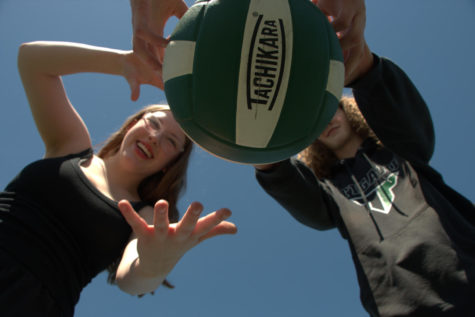The fury rises from the field
Boys lacrosse team frustrated by the lack of recognition by school
April 25, 2018
Midway through the 2018 lacrosse season, players feel a lack of support from the school.
On March 17 tempers flared after the fundraiser game for the girls and boys lacrosse program abruptly ended when the lights timed out for the night mid-game.
This wasn’t the first time something like this had happened to the teams. “We have had several games stop in the middle of play because the stadium lights have turned off, something we have no control over,” boys senior Captain Derek Leitherer said. “This problem has been going on for years.”
Sophomore Owen Wolf expressed concern about the lack of the school’s support for the program. “The school in general does not do enough to support lacrosse,” Wolf said. Part of the dilemma for the school and the athletes is that lacrosse is not an OSAA-sanctioned sport.
The last time a new sport was included in the OSAA was in 1979 when softball was added. One of the myths about adding sports to the OSAA is that there is an athlete threshold or a school threshold. Actually, to become an OSAA sport means that there must be a certain number of schools that support the sport not a certain number of athletes that play.
“I do think OSAA will sanction lacrosse… However I do not see OSAA sanctioning lacrosse in the next five years,” Tualatin Boy’s Head Coach Les Boatsman said.
It is also up to the OSAA members of the school and whether or not they want it to become a sport. “OSAA staff and executive board would strongly encourage this to happen with boys and girls [lacrosse] simultaneously,” Sports Information Director Steve Walker said.
The boys lacrosse players continue to question whether or not the school really supports lacrosse as much as the other OSAA-sanctioned sports. Part of their questions come from the cost of their sport versus other sports at the school.
Boys lacrosse fees are $550, whereas the cost of most other sports is $225. Since lacrosse is a club, they are responsible for their own fees.
The fee structure also differs depending on the school and district. At Grant High School the fee for boys lacrosse is $400-450 while the school fee is $200. Lake Oswego boys lacrosse athletes pay $450. At Lake Oswego, girls lacrosse is a school sport due to a Title IX settlement, so girls pay the school fee of $300.
Even in the TTSD district, costs and conditions vary. Tualatin’s lacrosse athletes pay $425 for boys and $385 for girls.
Athletes and parents at all of these schools explained the fees did not include equipment purchases that can run into the hundreds, approximately $100 for a helmet and $100 for a stick, and those fees were only a small part of raising enough money to field the teams, and then additional sponsorships and fundraising was required as well.
The reality of lacrosse costs is that only players who can afford to pay are able to play.
While the lights timing out may have been a simple mistake, it was symbolic. It led to an outcry from the players.
Boy’s Lacrosse Head Coach Neal Bateman would hate for a miscommunication to jeopardize relations with the lacrosse program and the athletic department. Bateman also noted that the school and club have the players’ best interests at heart.
However, players have a hard time feeling a part of the athletic community at school. “It would be nice if we felt like a part of the athletic program. Our games are never announced, our game schedule is not on the wall of the Athletic Director’s office like all the other sports…. It’s as though our sport does not count,” Leitherer said.
The lights are set up on a weekly timer that Boschma sets in place after he gets the final master schedule for all of the week’s activities. Few people have access to the key cards, those include Boschma, administration and custodians. Boschma is the only person who has access to the computer that controls the lights schedule for the week. “We knew about the game ahead of time; however, the game was not put on the master schedule for the week, so the lights were not scheduled to stay on,” Boschma said. He also said he is more than willing to have the lights on for the team. Although the athletic department left the game off of the schedule, according to Sheryl Reedal, the athletic secretary, the coaches should have double-checked the game on the master schedule for the week. The Athletic Department sends out a weekly schedule for the coaches of every sport in season. They are supposed to review the schedule and make sure that it looks right. If something is missing, they should alert the athletic office. The fundraiser game never made it to the master schedule.
Lacrosse has access to the field, lights, bathrooms, and more for no extra fee to the school. This is a better arrangement than at some schools where the clubs must pay for the field space too.
However, these student athletes still feel like they are not getting enough from the school. “The athletic department…struggles with supporting it because it’s not one of the main sports like track, football or basketball so it falls under the radar,” Wolf said. The players also said that just recently they began to get access to the bathrooms that are open for the football games in the fall.
Additionally, because the lacrosse practice and game surface is the baseball outfield, practices and games start late after baseball practice and games are over. “We do not get the turf fields before 7:30 p.m. with all of our games starting at 8:30 p.m. We usually do not finish until 11:00 p.m.” Leitherer explained. “We still have to go home and complete homework for the next day.”
Tigard High School Leadership Advisor McKenzie Coulson formerly coached lacrosse at Tigard. She also coached for three years at George Fox University, and for the past two years she has been coaching at Jesuit High School. Having coached and played at different schools in Oregon, she knows the complications and struggles that being a club sport and high school sport at the same time creates.
“That level of independence is really admirable; the difficulty with being a club sport is the integration into the fabric of other sports,” Coulson said. Every lacrosse team will struggle with identity to some extent and at every school the struggle looks different.
Coulson admits that the structure and support for athletics at Jesuit, a private school with a long history of sports success, makes the struggle a bit easier. “For Jesuit, the sport is way more integrated into the athletic department.”
Lacrosse players have mainly expressed that they just want their hard work and love for the sport to be acknowledged by the school. “At the very least, it would be nice if these representatives acknowledged the fact that we work just as hard as every other athlete in this school, and a little cooperation would help us concentrate on becoming better at the sport we love,” Leitherer said.
Even if the logistics remain difficult and the fees high, a new, relationship is already being forged between the school and the players. “Principal Van Fleet made himself known at our game against Grant last week and the boys took notice. I know that they really appreciated his presence and it was nice of him to introduce himself to me before the game,” Bateman said.











Brian • Apr 29, 2018 at 9:26 pm
Great article. Nice job. Hopefully some change will occur with the THS AD office.